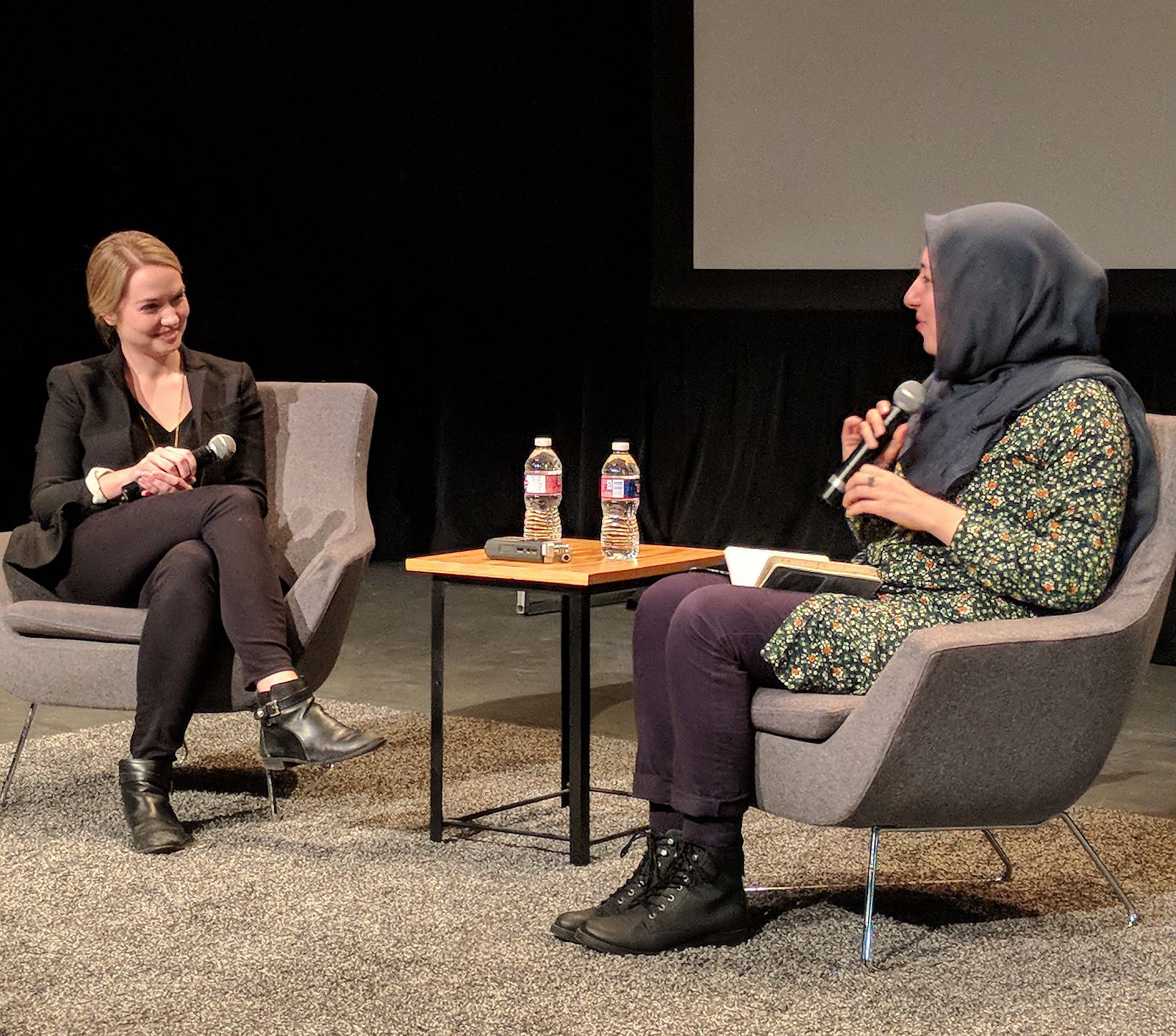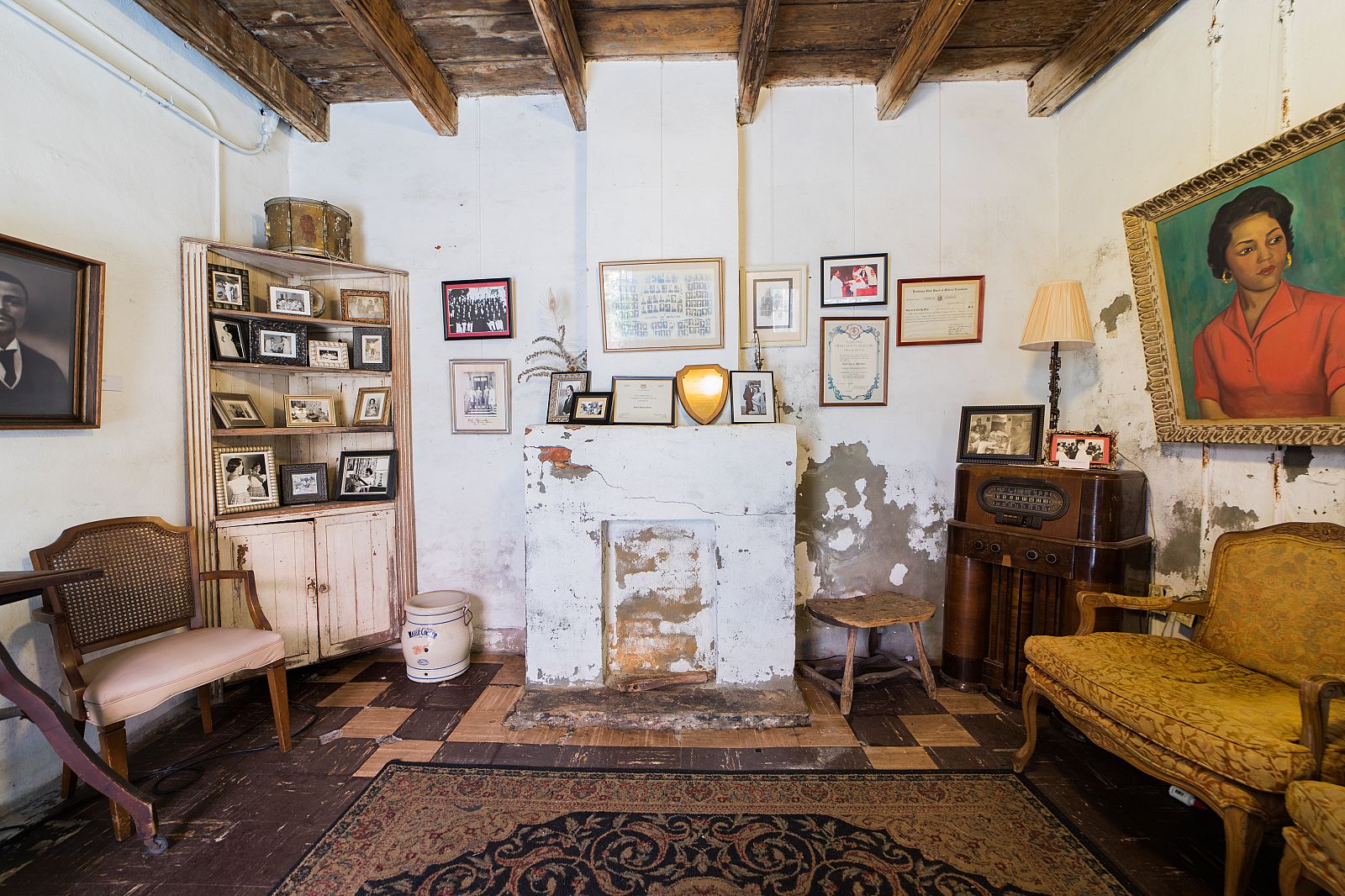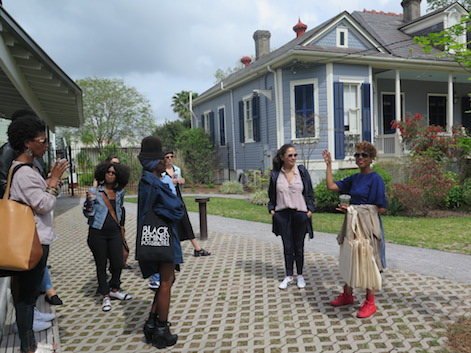The relative autonomy of independent cultural work in neoliberal creative economies: its upsides and downsides.
In March 2017, I attended the ICI Curatorial Intensive in New Orleans, a weeklong program focused on discussing the concepts, logistics, public program and challenges of organizing a series of curatorial projects that thirteen international curators submitted as part of the application process. ICI has become an internationally recognized education and networking platform for independent cultural agents that work in the field of curatorial practice in the arts. In collaboration with the Joan Mitchell Center and other local art institutions such as the Contemporary Arts Center and Prospect New Orleans, the program consisted of seminars, site visits, individual meetings and roundtable discussions conducted by ICI staff, guest lecturers and advisors. The insights that each speaker provided within their field of expertise came from very specific and pragmatic topics such as mapping the funding landscape and designing an optimal financial architecture depending of the nature of our curatorial projects (Renaud Proch), the production of a complex curatorial project such as Funk, God, Jazz, and Medicine: Black Radical Brooklyn (Rashida Bumbray), to more performative-theory approaches linked to black-marxist race gender studies (Rachel Ellis Neyra).
This wide selection of topics contributed to the development of our projects by providing strategies to better understand their core and their relevance, but also how to engage more critically our topics of interest or objects/subjects of analysis by questioning existing practices of communicating as well as the frameworks in which we are reflecting on ideas of resistance, belonging, agency, and liberation. After listening to Renaud Proch, Rashida Bumbray, Shana M. griffin or Trevor Schoonmaker’s presentations, it became clear to me that when we talk about independent curatorial work, we talk about a myriad of tasks and skills that the curator has to forge and that constantly stretch, depending on the needs of each project, to unimaginable fields. These presentations revealed a reality that didn't shock me since it corresponded to my curatorial experience so far.
While developing projects, I often feel like I'm doing tasks that fall out of the category of “curatorial work” or at least what I once thought it entailed, or what my colleagues that work in the framework of art institutions had described to me. Whether you want it or are prepared or not, the field demands you to develop a sensibility not only for writing and research, but also for public speaking, museology, design, fundraising, strategic institutional alliances, flexibility for traveling, diplomacy; in short, becoming a sophisticated, cosmopolitan and globalized cultural manager. Although most of the participants who attended the workshop were affiliated with an institution and in some cases financially supported by those institutions, the projects discussed during the sessions were framed as personal initiatives hence, most of them are unpaid projects developed before, in between, or after their office jobs. After the struggle waged over the course of many years to put legal limits on the working day, it wouldn't be unreasonable to ask ourselves why would people voluntarily engage in additional work. In this tourbillon of productivity, what happened to the necessary unproductive time-spaces promoted by Lafargue or Vanegeim? Even if a job is fulfilling— because at least in the cultural sector, the contradiction is much more complex than a simple antagonistic relationship between personal and work-related projects— these side-projects seem to compensate the alienation of labor, the separation from the control of the labor process and from the created products; the kind of separation experienced by any salaried employee in a capitalist economy. However, the fact is that they don't compensate anything but otherwise, every time we “afford” to subsidize these unpaid projects through self exploitative conditions, we establish, preserve, and reproduce the generalization of precariousness as a fundamental condition of contemporary independent cultural labor.
On the surface, independent cultural work might seem removed from the capitalist labor process. In fact, freelance colleagues often underscore the freedom they feel especially in regard to the use of their time, but also on the decisions on what and how to produce. In this sense, this kind of work would seem to represent the ultimate freedom for workers: you own your time and the production process. Whether this assumption is true or false, it’s worth pointing out that today, this arrangement is ideal for capital. The conditions of permanent risk and uncertainty that underlie the development of these independent projects are often obscured by mystifying narratives that justify the exploitation and precariousness that is at the core of this type of work— for example, the idea that this kind of work is highly desirable, glamorous and/or self-fulfilling. Freed from the burden of employment, relieved of the costs of training, overhead, benefits, and paying for unproductive time, cultural institutions, in a neoliberal fashion, hire independent workers only for short-term projects or purchase completed curatorial projects in order to waive the risks and costs of production onto those workers who, motivated by the relentless search for work and increasing competition, strive to produce their best work, providing capital ample choice from a pool of skilled workers bargaining down the costs of their labor power.
For people with a certain background and privileges, trading the economic certainty or security that wage labor offers for the autonomy of production is a decision they make. However, for less favored workers this is a condition of labor that is imposed and rapidly generalized in the cultural sector. It is important to underline that under the existing neoliberal fierce competition, the much-praised autonomy of independent labor becomes quite relative, since everyone ends up adapting, in one way or another, to the needs of capital. In the end, what being independent most accurately ends up pointing at is not so much the autonomy of the worker but the invisible precarious labor conditions that she shares with the rest of independent curators that fulfill the constant demand of producing interesting, critical and politically disruptive exhibitions, publications, screenings, public programs, feeding and strengthening the neoliberal creative economy. This is the context that certainly shapes how independent curators assume themselves as cultural workers and how they deliver their work, sometimes with a critical standpoint vis à vis these conditions, or not.

As I suspected and later on confirmed with some of the organizers, it was certainly not a casual decision to make this program in New Orleans: a city marked by slavery, the Indian Removal Act, the Civil War, the rise of the oil and gas industry and Hurricane Katrina’s major flooding. Although it is poor, segregated, scorned— and paradoxically also exoticized— by outsiders, criminalized, redlined, and over-policed, it remains as an assemblage of terrains imbued with much meaning, nesting, struggle, history and community. While writing The Unfathomable City, Rebecca Solnit once described New Orleans as a small parochial city that connects the vast interior of North America drained by the Mississippi to the Caribbean-Latin American South. There is something in the (dense) air that occupies this geographical space. There is something in its wooden houses with their pillared porches painted with vivid colors; something in the deep sense of belonging and warm socials relations woven into the fabric of this place; something very powerful about the black core of this city that struggles against its erasure and displacement promoted by a powerful elite that strives to tear it out of the city by rebuilding a cityscape in a fashion more amenable to the accumulation of capital, nevertheless keeping its cultural products—music, food, language, history and art.
This “something” added another layer to the immersive experience of the program. This layer made inevitable a constant reflection about the distribution/segregation in the city, the flourishing of gentrification through the establishment of art spaces in the 9th Ward, but also about the workings and relationship of the Joan Mitchell Center, where most of the seminars took place, with the local artist’s community. Although the seminars and lectures were very insightful and occupied most of the program, the program was not limited to these formal encounters. Everyday, during lunch or after the seminars, some of us would gather to exchange ideas and discuss our projects and their viability, but also about life. I will always be grateful to Kai Lumumba Barrow for her hospitality in the widest sense of the term. Her critical inputs and disruptive presence inside and outside the seminars; but also, for the very interesting and life-changing evening at her studio in which we exchanged passionate and critical ideas with Naz Cucuoglu, Alexandria Eregbu, Queta Beasley Harris, José López Serra and Ladi’Sasha Jones over a delicious takeaway of Lebanese food and warm beer and wine.

The participants’ fresh gaze towards each project always proved not only very enriching in reshaping the premises or the outcomes of the projects but also as a space for building complicities and affinities among colleagues and why not, future collaborations. Among the participants, there was a group of “local” (1) artists and curators who from the beginning set a critical guideline on the tone from which we would be expected to discuss during the seminar sessions. For example, a very interesting common theoretical standpoint that was shared and jointly built during this week, was the understanding of black radical imagination as a Marxist approach that could engage utopia and a post-capitalist future from the perspectives of class, race and gender politics. These three variables were always on the table as the social framework or conditions for discussing any past or contemporary problem that the projects would aim to address. Rachel Ellis Neyra, from her queer-latino perspective, brought about the concepts of “radical patience” and “performative listening” to de-center our focus on meaning and draw our attention to experience, to the politics of friendship and the impossibility of an “objective” point of view when writing about something.
Regarding the project I submitted, during the week, with the input of the seminars and especially of the individual sessions with María del Carmen Carrión and Rachel Ellis Neyra, I was able to reformulate and develop a full proposal for the exhibition of Teo Hernández’s films and archive in Mexico. This exhibition, co-curated with Regina Tattersfield, will take place at Centro de la Imagen in March 2018 with the collaboration of a group of contemporary artists from Mexico and France, who have been part of the research process during the past year. After two years of research, I was in the process of writing and preparing the dossier that was going to be presented to Centre Georges Pompidou on May 3, 2017 in Paris. After the ICI Curatorial Intensive, the one-on-one conversations, the long walks in the evenings through the long and green boulevards of the 7th Ward, I was able to conceive the different components of the project, the financial architecture, the role of each person involved in the project over the past years in order to present the proposal in Paris.
At the end of the program, our proposals were presented at the Contemporary Arts Center New Orleans (CACNO), where all the participants had the chance to define more clearly the projects in a public setting. As independent curators, we seldom have the opportunity to receive many concentrated and meaningful feedbacks from colleagues, so I’m sure that everyone felt quite enriched and grateful for the generous comments and exchanges that we all got from our peers and the ICI staff during the program.

(1) I use the quotations because from the first day, very aware of the common exoticization of locality, they questioned the local dimension of their work acknowledging that even if their practice and workspace was rooted in the specificity of New Orleans, the relevance and connections of their aesthetic and political interests crossed states, regions, countries and could easily be inserted into an international territory of artistic practices.









